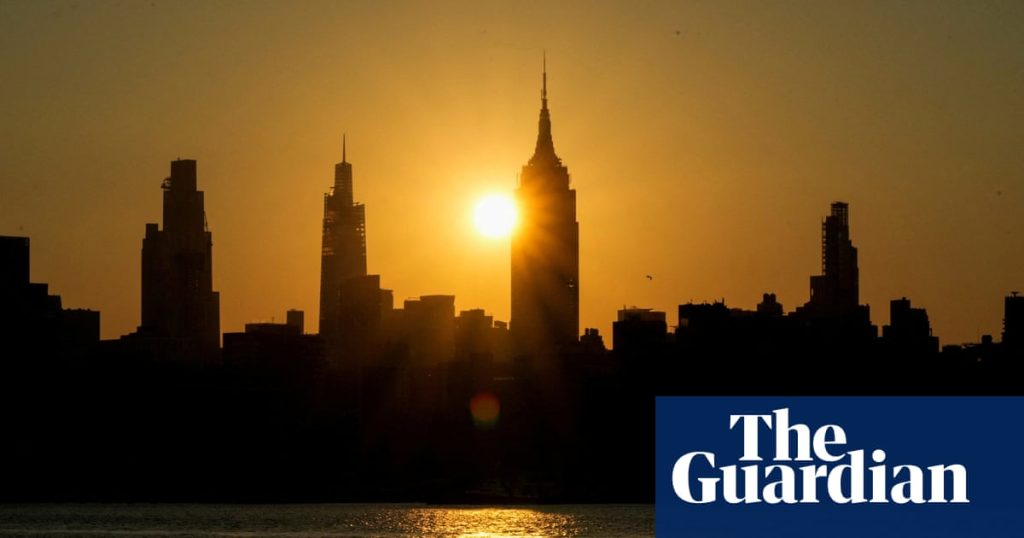More than a 100 million people in the US will face dangerous conditions over the weekend as a heat dome which has scorched much of the center of the country nudges eastward.
Heat advisories were in place on Friday all across the north-eastern coast from Portland, Maine to Wilmington, North Carolina, with the daytime heat index temperatures 10 to 15F above average in some places.
Overnight temperatures will also be very warm and oppressively muggy, according to the National Weather Service (NWS).
While thunderstorms, some of them severe, are expected to break the heat by Friday night for the north-east, heat and humidity will continue to build further south with the most persistent and dangerous conditions expected across the south-east and Tennessee Valley this weekend.
The heat index is what the temperature feels like when humidity is taken into account. New York City is forecast to swelter under a 106F heat index on Friday afternoon – slightly higher than Phoenix, Arizona, the hottest major city in the US.
In the south-east, the heat index could exceed 115F, risking the health and lives of people without access to sufficient cooling and/or adequate hydration, the NWS warned. “This will be a long duration heat wave, with little to no overnight relief and high humidity levels, leading to an increased danger,” the federal service warned.
High temperatures and high humidity increase the risk of heat exhaustion, heat illnesses and death, with children, older people and those with existing physical and mental health conditions at highest risk. Outdoor workers – gardeners, builders, farmers, and delivery workers – along with unhoused people and those with substance use issues are particularly vulnerable.
A heat dome is a particular weather phenomenon where hot air is trapped over a region by a stalled high-pressure system causing high temperatures on the ground. With little cloud cover due to the stuck high-pressure system, the sun’s rays directly hit the ground, further increasing the heat.
While heat domes cause heatwaves – which are becoming more frequent thanks to the climate crisis – there can be heatwaves without heat domes. Climate scientists have found that heat domes are getting hotter due to global heating caused by humans burning fossil fuels.
And while the latest dome in the US is moving slowly, it continues to cause dangerous conditions in parts of the mid-south to mid-Mississippi Valley, with heat alerts still in place from Oklahoma to West Virginia.
In the so-called corn belt, the midwestern and some southern states where most corn is farmed, a phenomenon known as corn sweat exacerbates the humidity, and can increase the heat index by as much as 10F. This is due to the pores on the underside of maize leaves, where oxygen – and water vapor – are released, Justin Glisan , state climatologist of Iowa, said in an interview with CBS News.
Meteorologists have also forecast flash flooding from north-east Kansas to much of Indiana, as well as possible scattered thunderstorms across parts of New England, the northern Mid-Atlantic, and North Dakota. Meanwhile dry, windy conditions have triggered a red flag wildfire warning for parts of Utah and Oregon.

